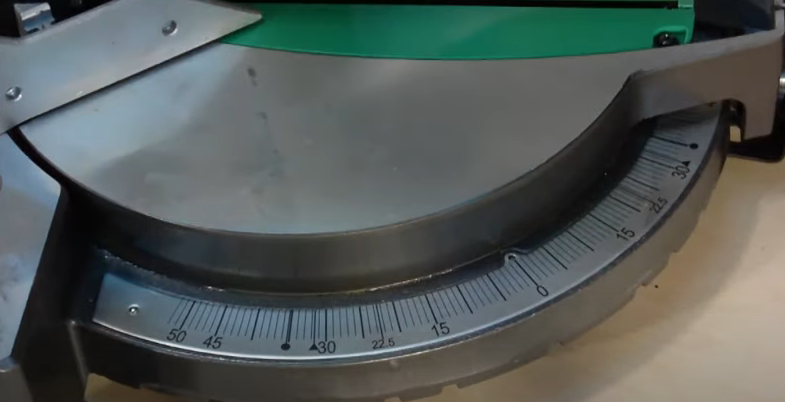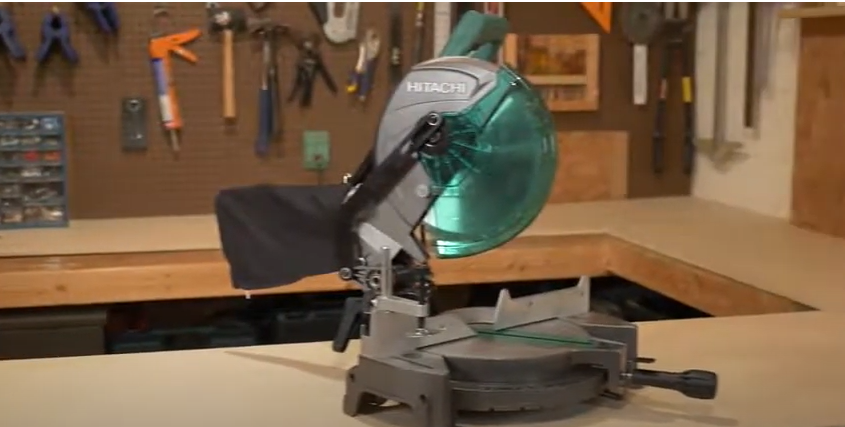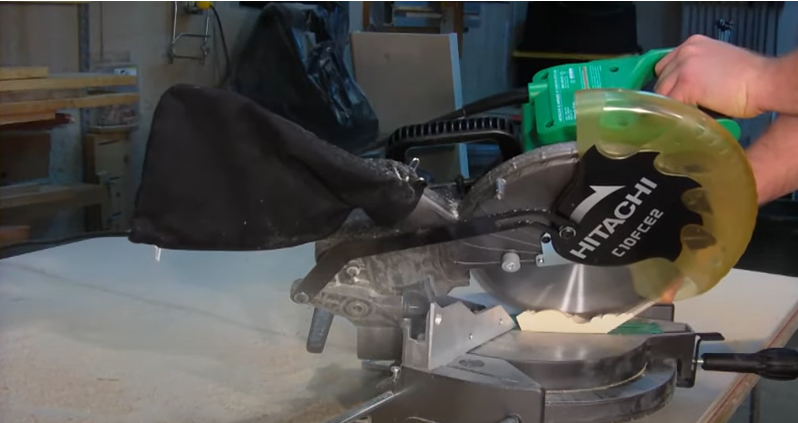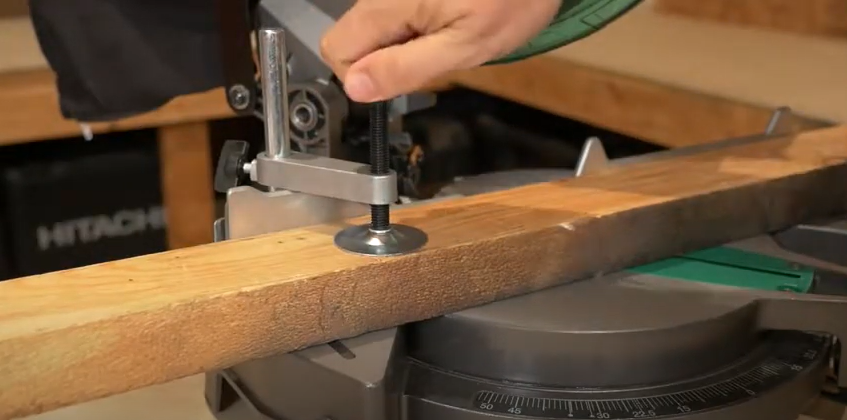When it comes to woodworking and carpentry tasks, compound miter saws are an essential tool for precise and efficient cuts. Hitachi’s C10FCE2 and C10FCG are two popular models that cater to both professionals and DIY enthusiasts. In this article, I’ll explore the key features of each saw, compare their differences, and provide a comprehensive comparison table to help you make an informed decision.
Key Features And Differences
Motor Power And Blade Size
Both the Hitachi C10FCE2 and C10FCG are equipped with a powerful 15-amp motor and a 10-inch blade. This combination ensures reliable performance when cutting various materials, such as hardwoods, softwoods, and plywood.
Miter And Bevel Angles
The C10FCE2 and C10FCG offer a wide range of miter and bevel angles, allowing for versatile cutting applications. Their miter angle range spans from 0 to 52 degrees to the right and left, while the bevel angle range extends from 0 to 45 degrees to the left.
Laser Marker System
A notable difference between the two models is the built-in laser marker system on the C10FCE2. This feature projects a cutting line onto the workpiece for enhanced accuracy. The C10FCG, however, does not include this feature.
Weight And Portability
The C10FCE2 is slightly heavier than the C10FCG, weighing in at around 26.5 pounds (12 kg) compared to the C10FCG’s 24.2 pounds (11 kg). This difference may impact portability and ease of use, particularly for users who need to frequently move the saw.
Price
For those on a budget, the C10FCG is typically priced lower than the C10FCE2, making it a more affordable option.
Pros And Cons Of Hitachi C10FCE2 Vs C10FCG
Hitachi C10FCE2

Pros:
- Built-in laser marker system for improved cutting accuracy
- Powerful 15-amp motor suitable for various cutting tasks
- Wide range of miter and bevel angles for versatile applications
- 10-inch blade capable of handling different materials
- Reliable and precise cutting performance
Cons:
- Slightly heavier than the C10FCG, which may impact portability and ease of use
- Higher price compared to the C10FCG
Hitachi C10FCG

Pros:
- Lightweight design, making it more portable and easier to use
- Powerful 15-amp motor suitable for various cutting tasks
- Wide range of miter and bevel angles for versatile applications
- 10-inch blade capable of handling different materials
- More budget-friendly compared to the C10FCE2
Cons:
- No built-in laser marker system for cutting accuracy
- May require additional care and technique to achieve precise cuts
Accessories For Hitachi C10FCE2 and C10FCG

Both the Hitachi C10FCE2 and C10FCG come with a standard set of accessories. However, you may find additional aftermarket accessories compatible with these saws to improve their functionality and performance.
Standard Accessories
- 10-inch TCT (tungsten carbide-tipped) saw blade
- Dust bag for collecting sawdust and debris
- Vise assembly for securing the workpiece
- Hex wrench for blade changes and adjustments
Optional And Aftermarket Accessories
- Laser guide (for C10FCG, if desired): An external laser guide can be attached to the C10FCG to improve cutting accuracy.
- Stand: A compatible miter saw stand can provide additional support and stability while working.
- Extension wings: These can be attached to the saw to support longer workpieces.
- Crown molding stops: Specially designed stops can help achieve precise cuts when working with crown molding.
- Blade guard: An aftermarket blade guard can provide additional safety while operating the saw.
Please note that it’s essential to ensure compatibility before purchasing and installing any third-party accessories for your Hitachi compound miter saw.
Comparison Table
| Feature | Hitachi C10FCE2 | Hitachi C10FCG |
|---|---|---|
| Motor Power | 15 amps | 15 amps |
| Blade Size | 10 inches | 10 inches |
| Miter Angle Range | 0-52° (right & left) | 0-52° (right & left) |
| Bevel Angle Range | 0-45° (left) | 0-45° (left) |
| Laser Marker System | Yes (built-in) | No |
| Weight | 26.5 pounds (12 kg) | 24.2 pounds (11 kg) |
| Price | Higher | Lower |
| Portability | Slightly less portable | More portable |
| Cutting Accuracy | Improved with laser marker | May require additional technique |
| Suitable for Beginners | Yes, with laser marker aid | Yes, more budget-friendly |
| Standard Accessories | 10″ TCT blade, dust bag, | 10″ TCT blade, dust bag, |
| vise assembly, hex wrench | vise assembly, hex wrench | |
| Optional & Aftermarket | Stand, extension wings, | Stand, extension wings, |
| Accessories | crown molding stops, blade guard | crown molding stops, blade guard |
| laser guide (if desired) |
This detailed comparison and difference table summarizes the key features, differences, and accessories of the Hitachi C10FCE2 and C10FCG compound miter saws. Use this table to help you choose the right saw based on your specific needs and preferences.
Tips For Making The Most Of Your Compound Miter Saw

Regardless of which model you choose, it’s essential to use your compound miter saw correctly to achieve optimal performance, safety, and efficiency. Here are some tips to help you make the most of your Hitachi compound miter saw:
Safety Precautions
- Always wear appropriate safety gear, such as eye protection, ear protection, and a dust mask, when operating the saw.
- Ensure the work area is clean and free of debris to minimize tripping hazards and improve overall safety.
- Keep your hands at a safe distance from the blade while cutting.
- Make sure the saw is turned off and unplugged before making any adjustments or changing blades.
Proper Maintenance
- Regularly clean the saw, removing any dust and debris that may accumulate over time.
- Lubricate moving parts as needed to ensure smooth operation.
- Check and tighten any loose bolts or screws to maintain stability.
- Inspect the blade for any signs of wear or damage, replacing it when necessary.
Accurate Cutting Techniques
- Always use a sharp, high-quality blade that is suitable for the material being cut.
- Properly support and secure the workpiece to prevent movement during cutting.
- Make test cuts on scrap material to ensure accuracy and fine-tune any adjustments before making the final cut.
- Use a straight edge, square, or other measuring tools to align the workpiece accurately.
- Take your time and make smooth, controlled cuts to achieve the best results.
By following these tips and guidelines, you can optimize the performance and longevity of your Hitachi C10FCE2 or C10FCG compound miter saw, ensuring precise and efficient cuts for all your woodworking and carpentry projects.
Frequently Asked Questions (FAQs)
Which Model Is More Suitable For Beginners?
Both models are suitable for beginners. However, the C10FCE2’s laser marker system may be particularly helpful for those who are new to using compound miter saws, as it aids in making accurate cuts. On the other hand, the C10FCG is more budget-friendly and slightly lighter, which can also be beneficial for beginners.
Is The Laser Marker System A Must-Have Feature?
The laser marker system is not a must-have feature, but it can significantly improve cutting accuracy and reduce the risk of mistakes. If you prioritize precision and have the budget, the C10FCE2 with the laser marker system may be a better option. However, many users can still achieve precise cuts with the C10FCG by carefully aligning the workpiece and using a straight edge or other guide.
Can I Add A Laser Marker System To The C10Fcg If Needed?
While the C10FCG does not come with a built-in laser marker system, you may be able to find an aftermarket laser guide that can be attached to the saw. It’s important to ensure compatibility before purchasing and installing any third-party accessories.
Which Model Is More Suitable For Heavy-Duty Use?
Both the C10FCE2 and C10FCG are capable of handling various materials and cutting tasks due to their 15-amp motor and 10-inch blade. However, the C10FCE2’s laser marker system may offer an advantage for heavy-duty use, as it can help ensure accurate cuts even during extended periods of operation.
Conclusion
In summary, the primary differences between the Hitachi C10FCE2 and C10FCG compound miter saws are the laser marker system and weight. If you value the added precision that the laser marker system provides and don’t mind the slightly heavier weight, the C10FCE2 is a better choice. On the other hand, if you’re looking for a more affordable, lighter option without the laser marker, the C10FCG is a solid alternative. Ultimately, the right saw for you will depend on your specific needs, preferences, and budget.
Key Points And Takeaways
- Both models feature a 15-amp motor and a 10-inch blade
- Miter and bevel angle ranges are the same for both saws
- The C10FCE2 includes a laser marker system, while the C10FCG does not
- The C10FCE2 is slightly heavier than the C10FCG
- The C10FCG is typically more affordable than the C10FCE2





